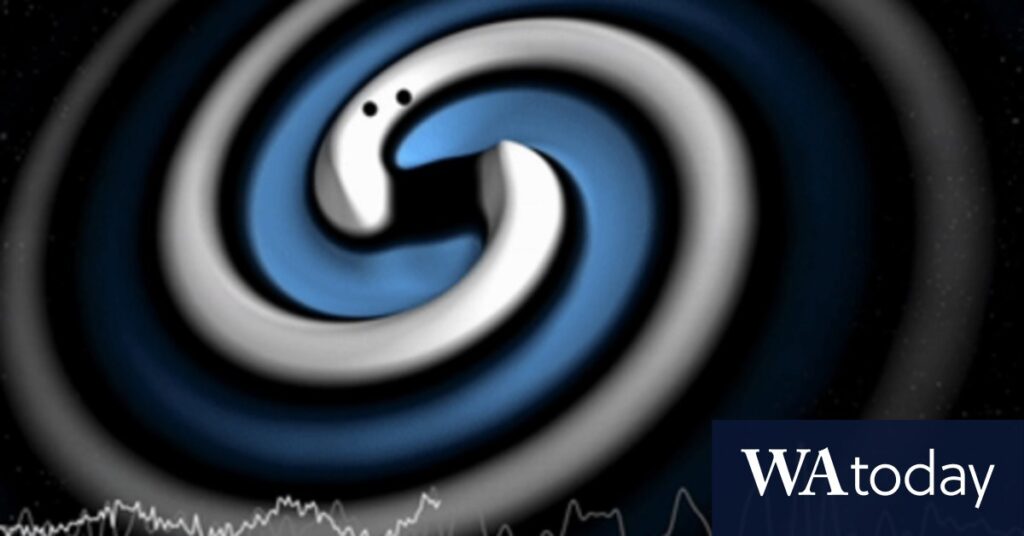
Australian PhD students have played a pivotal role in observing one of the universe’s most colossal events—the collision of two black holes. This groundbreaking observation, which occurred on January 14, 2025, has provided empirical support for a theory developed decades ago by renowned physicist Stephen Hawking.
The “sound” of this cosmic collision was detected as a wiggle in warped space-time by the Laser Interferometer Gravitational-Wave Observatory (LIGO) in the United States. Teagan Clarke, a PhD student at Monash University, was among the first to analyze the data as the clearest signal from merging black holes reached Earth.
“There’s a bunch of analysts like me all over the world monitoring these signals so that someone’s always awake, ready to start analysing these events as soon as they arise,” Clarke said. “It was a bit of a surprise to see such a loud one during my shift, and it was pretty exciting to be on the journey from the very first moment the signal arrived all the way up until now, where we’re able to share it with the public.”
The Science Behind the Collision
The signal, captured with unprecedented precision, allowed scientists to gain new insights into the behavior of black holes, supporting Hawking’s theory that even these enigmatic structures adhere to the laws of thermodynamics. As black holes collide, they emit gravitational waves—ripples in space-time first detected in 2015.
Neil Lu, a lead author and PhD student from the Australian National University and the ARC Centre of Excellence for Gravitational Wave Discovery (OzGrav), explained the phenomenon:
“Excited black holes are known to ‘ring’ like cosmic bells at precise frequencies.”
These frequencies, when converted to sound waves, are audible to the human ear, allowing astrophysicists to analyze the “chirp” of a black hole collision. This analysis provides crucial information about the mass and spin of the black holes involved.
Technological Marvels and Scientific Implications
The signal that reached Earth traveled 1.3 billion light years and was detected as a minuscule quiver, a thousand times smaller than a proton. Such faint signals are captured by the LIGO-Virgo-KAGRA collaboration, a trio of observatories equipped with some of the world’s most precise measuring instruments.
These observatories use lasers bounced between mirrors set kilometers apart to detect gravitational waves, which cause tiny disruptions in the laser beams. This method offers a new way to explore the universe beyond traditional light-based observations.
Clarke elaborated on the process:
“The actual data essentially arrives as a wiggly line. It’s my job to take all of these wiggles—in this case a very, very nicely measured wiggle—and actually find out new physics about black holes from them.”
Confirming Hawking’s Theories
This particular merger provided the clearest gravitational wave signal ever observed, allowing scientists to test Einstein’s theory of general relativity and Hawking’s black hole area law. Hawking’s theory links to the second law of thermodynamics, suggesting that a black hole’s entropy is encoded in its surface area. As black holes merge, their combined surface area—and thus their entropy—should increase.
“Black holes are still really mysterious, and it’s still unclear how they actually fit into the laws of physics in the universe. It was definitely not entirely clear that they would necessarily follow Hawking’s area theorem,” Clarke said.
This observation not only supports Hawking’s theoretical predictions but also opens new avenues for understanding the fundamental laws governing the universe. The implications of these findings are vast, potentially influencing future research in cosmology and theoretical physics.
As scientists continue to analyze the data from this historic event, the collision of these black holes serves as a testament to human ingenuity and the relentless pursuit of knowledge about the cosmos. The research community eagerly anticipates further discoveries that may arise from this unprecedented observation.







